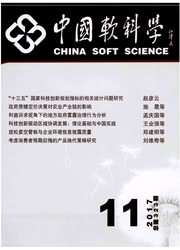

 中文摘要:
中文摘要:
金融危机之后,美国推出了一系列促进全球经济再平衡的政策举措。但对于这些政策的影响却很少有学者进行定量的研究和评估,因此,本文采用动态GTAP-Dyn模型测算了美国储蓄率上升对我国的宏观经济影响。模型结果显示,与基准情景相比,2015年中国经济和福利将获得小幅的正面影响,而美国将受到一定的负面冲击。同时,我国生产要素成本增加将会导致我国实际汇率升值。另外,该措施将会增加我国内需比重,降低对外需依赖,对我国的经济发展方式转变有促进作用。从行业产出看,对我国行业有小幅的负面冲击,而对美国产业基本上呈较大幅度的正面影响。从中美双边贸易看,由于需求效应的影响,中国对美国农产品及其加工品的出口减少。与此相反,替代效应导致美国对中国工业品的出口大幅增加。
 英文摘要:
英文摘要:
After financial crisis, U.S. launched a series of policies to re - balance the global economy. But very few scholars make quantitative research on the impact of these policies, therefore, this paper uses the dynamic GTAP - Dyn model to estimate the macro - economic impact of the U.S. savings rate's rising on China. Model results show that compared with the baseline scenario, in 2015 China's economy and welfare will have a small positive benefit, while the U. S. will have a negative effect. At the same time, China's real exchange rate will appreciate because of increasing cost of production factors. In addition, the measure will increase the proportion of China's domestic demand and reduce reliance on external demand; which will promote China's economic development. From the perspective of industry output, there is a slight negative impact on the majority of Chinese industries, while a positive impact on the U.S. industry. From the Sino - US trade, due to the demand effect, exports of agricultural products and processed products from China to U. S. have a negative impact. In contrast, exports of manufactured goods from U. S. to China increase significantly because of the substitution effect. Finally, the paper puts forward policy recommendations.
 同期刊论文项目
同期刊论文项目
 同项目期刊论文
同项目期刊论文
 期刊信息
期刊信息
